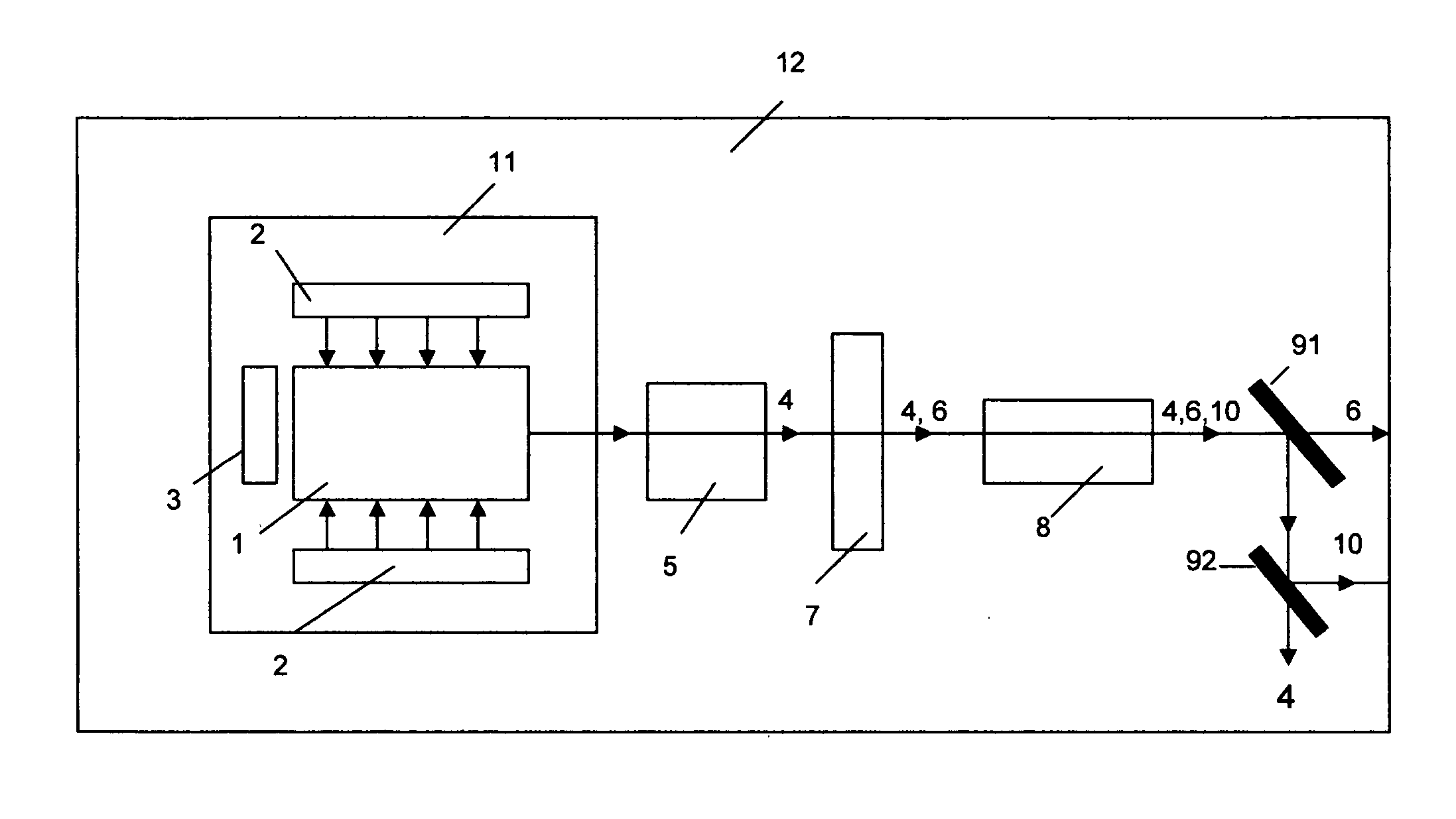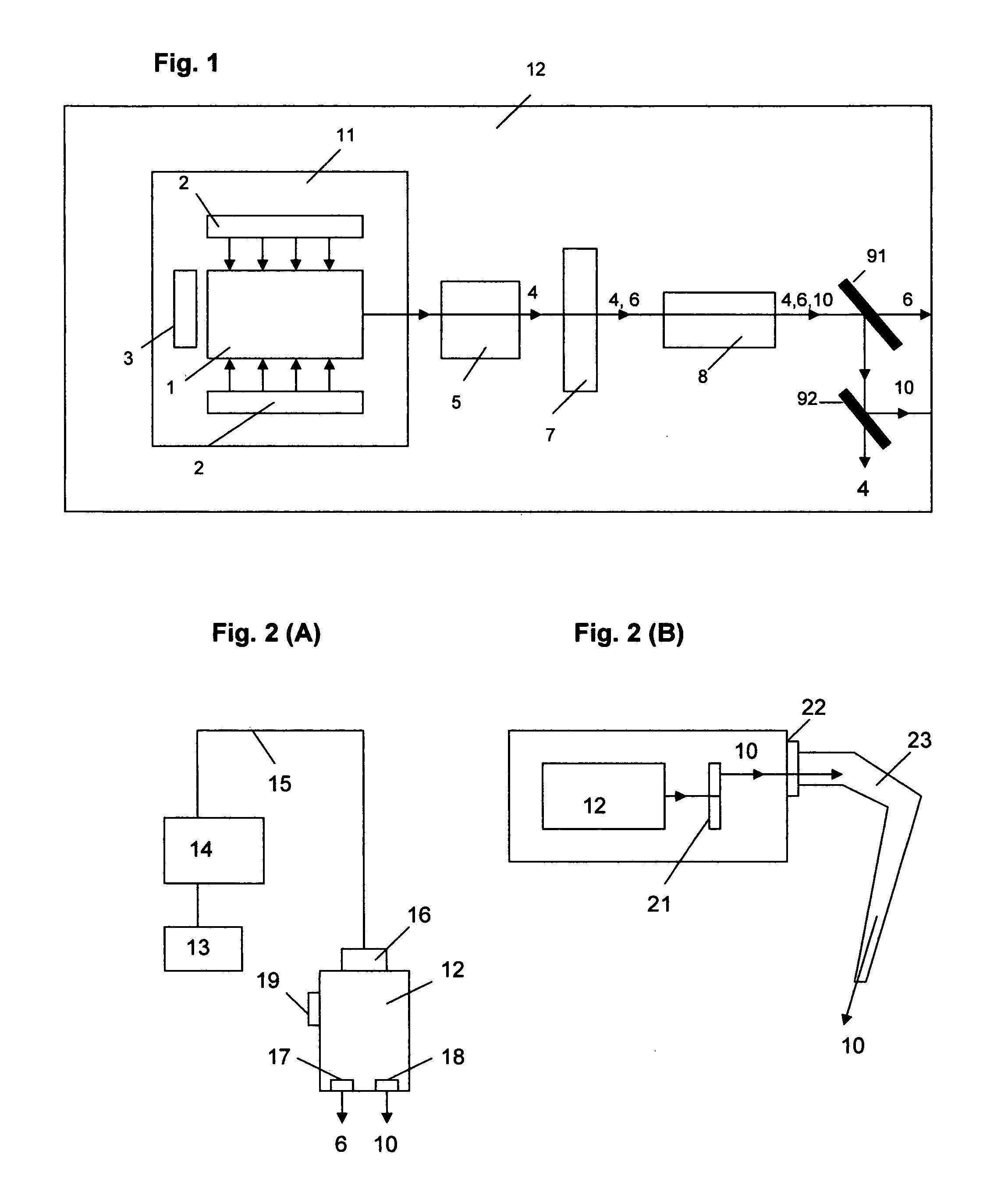Diode-laser-pumped ultraviolet and infrared lasers for ablation and coagulation of soft tissue
a laser and ultraviolet light technology, applied in laser surgery, medical science, surgery, etc., can solve the problems of limited industrial and military uv spectrum, limited dpl in uv spectrum about (210 to 360) nm, and limited dpl output power
- Summary
- Abstract
- Description
- Claims
- Application Information
AI Technical Summary
Problems solved by technology
Method used
Image
Examples
Embodiment Construction
[0030] As shown in FIG. 1 (A), a lasing crystal 1 is side-pumped by a pair of diode-laser array 2 and reflected by a back optics 3 to produce an output beam 4 which is mode controlled by a Q-switch device 5 for pulse output. The fundamental beam 4 having an IR wavelength at about 1064 nm or 1053 nm, for lasing crystal Nd:YAG or Nd:YLF, respectively, is converted to a green output 6 (at 532 or 527 nm) via a second harmonic generation nonlinear crystal (SHC) 7 which is further converted to a UV output 10 (at about 266 or 263 nm) via a fourth-harmonic generation crystal (FHC) 8 which may be separated from the IR and green by a pair of dichromatic optics 91 and 92. We also define the laser cavity 11 and the integrated unit 12.
[0031] The preferred specifications of materials used in FIG. 1 include: (1) back surface of the lasing crystal 1 is anti-reflection (AR) coated at the fundamental wavelength (IR), and its front (output) surface is partially reflecting (about 2% to 10%) to the IR;...
PUM
 Login to View More
Login to View More Abstract
Description
Claims
Application Information
 Login to View More
Login to View More - R&D
- Intellectual Property
- Life Sciences
- Materials
- Tech Scout
- Unparalleled Data Quality
- Higher Quality Content
- 60% Fewer Hallucinations
Browse by: Latest US Patents, China's latest patents, Technical Efficacy Thesaurus, Application Domain, Technology Topic, Popular Technical Reports.
© 2025 PatSnap. All rights reserved.Legal|Privacy policy|Modern Slavery Act Transparency Statement|Sitemap|About US| Contact US: help@patsnap.com



